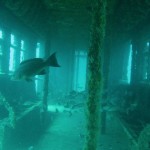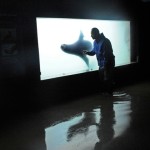The Morbidity and Mortality Weekly Report put out by the Centers for Disease Control makes for fascinating reading sometimes. One came out recently that contains three startling case reports linked to clam beds on the US east coast, but they do not involve, as you might expect, infectious diseases. In the first case a member of the public in Delaware had paved a driveway with a load of crushed clam shells and subsequently found a mysterious object protruding from the surface. The U.S. Air Force Explosive Ordnance Disposal (EOD) squad were called to remove the object, which appeared to be an artillery shell of some sort, and during transport to the Air Force base it oozed a black substance. Two members of the EOD team later developed yellow blisters and one of the team had to be hospitalised. In the second case, clam fishermen off Long Island NY dredged up several similar shells and as they went to dump them back in the ocean dropped one on the deck and were exposed the dark liquid inside. Two of the fishermen developed blisters and were treated in hospital In the third case, one of these artillery shells showed up among shells of the more clammy variety at a clam processing plant in DE; thankfully in that case no one was exposed.

It turns out that all three of these cases involved munitions containing liquid sulfur mustard, commonly known as mustard gas. Sulfur mustard is a very unpleasant chemical listed on Schedule 1 of the Chemical Weapons Convention, which means that it has no purpose in society other than as a chemical weapons agent. Sulfur mustard, which is mustard by name only and is actually a clear to brown liquid that sometimes smells of onions or garlic, is a potent blistering agent. Supposedly the blisters are excruciatingly painful. It’s very fat soluble and is easily absorbed into the skin, but it takes time for symptoms to develop so it is often too late to treat the exposure site with any kind of neutralising agent until it is too late. It’s generally not designed to kill, but to debilitate and cause enough suffering to be useful as an “area denial” tool. As if that wasn’t bad enough, sulfur mustard also damages DNA and is a serious carcinogen. Nice.
So what the heck is mustard gas doing in clam beds of the US northeast? Well it turns out we put them there, and by “we” I mean the US Government through its armed forces, which prior to 1970 (when it became illegal) disposed of many unwanted munitions at sea, including both conventional and chemical varieties. Chemical weapons were disposed of in the post-WWII, pre-1970 era at over 25 sites off 11 states on both US coasts, but the location of many of the sites is unfortunately lost to history (or perhaps “deliberately forgotten” to keep them secret and prevent people from actively seeking them out for nefarious purposes). One presumes that there is at least one such disposal site off Delaware and another off Long Island!
So the next time you are thinking about raking or tonging some clams and you pull up something that looks suspiciously man made or remotely artillery-like, do yourself a favour and BACK AWAY FROM THE MUSTARD GAS. You’ll be glad you did.
Dr Craig discussed this issue at DSN twice before (once, twice) WAY back in 2007, and Kevin Z talked about a similar case in Boston. Great minds think alike :)





